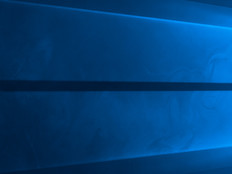Microsoft: Windows 10 Now Running on 200 Million Devices
As Microsoft marches toward its goal of having 1 billion devices running Windows 10, the company has announced that it now has 200 million “active” installations of the software. However, while adoption of Windows 10 is growing — up from 110 million as of Oct. 6, 2015 — a new independent measurement of the platform’s reach, provided by Net Market Share, shows that its market share is increasing only modestly.
Yusuf Mehdi, Microsoft’s corporate vice president of Windows and devices groups, said in a company blog post that Windows 10 adoption “is accelerating, with more than 40% of new Windows 10 devices becoming active since Black Friday,” which was Nov. 27. Mehdi said Windows 10 is being adopted more quickly than any previous version of the software, with adoption of Windows 10 outpacing Windows 7 by nearly 140 percent and Windows 8 by around 400 percent.
Big Targets for a New Platform
According to Mehdi, who cited data from the NPD Group, the U.S. retail PC share for Windows 10 jumped by 16 points, to 62 percent, since Black Friday, compared with the prior four weeks.
Microsoft is “also seeing accelerating and unprecedented demand for Windows 10 among enterprise and education customers,” Mehdi said. He added that more than 76 percent of the company’s enterprise customers are in active pilots of Windows 10.
The accelerated adoption makes sense, since it seemingly includes Windows 10 smartphones such as the Lumia 950 and 950 XL, which were released in November, as well as Xbox One gaming consoles that have been upgraded to Windows 10 software.
Indeed, a company spokesperson confirmed to ZDNet that the 200 million figure includes Xbox One consoles, and that "active" installations refer to Windows 10 devices that have been active in the last 28 days.
Microsoft has set a huge target for itself in terms of Windows 10 adoption. In April 2015, the company said it aimed to have 1 billion devices running Windows 10 by the summer of 2018, ZDNet notes. However, that figure encompasses every conceivable Windows 10 device, including PCs, tablets, Windows Phones, Surface Hub conferencing devices and HoloLens augmented-reality headsets. Windows 10 makes it possible to develop cross-platform applications that can run on all of those devices.
Adoption Is Rising, but Slowly
Although adoption of Windows 10 is growing, Microsoft still faces a few large challenges. As Re/code noted, the company needs to persuade Android and iOS developers to create apps for Windows. Microsoft also needs to convince enterprises and consumers that didn’t upgrade from Windows 7 to Windows 8 that upgrading to Windows 10 will be worth it.
Microsoft still has a large hill to climb with Windows 10 adoption. A new report from data tracking firm Net Market Share shows that Windows 10, released in late July, produced 9.96 percent of all Web traffic generated by desktop operating systems in December. That's up from 9 percent in November, CNET reported; but Windows 7, which was released in 2009, still held a share of nearly 56 percent in December.









